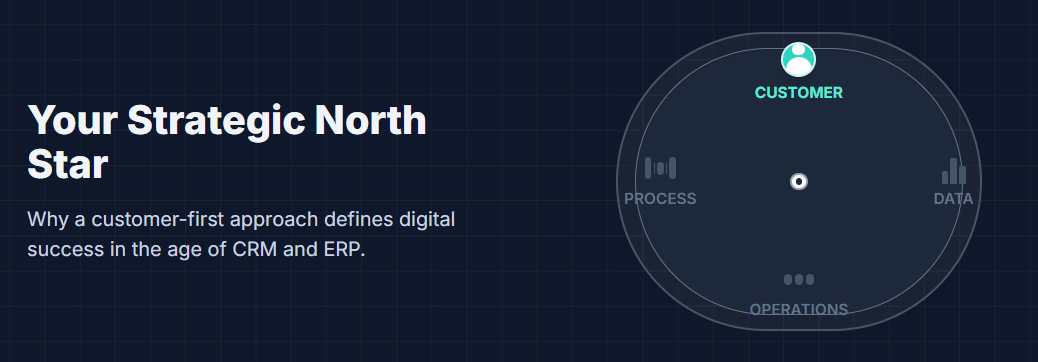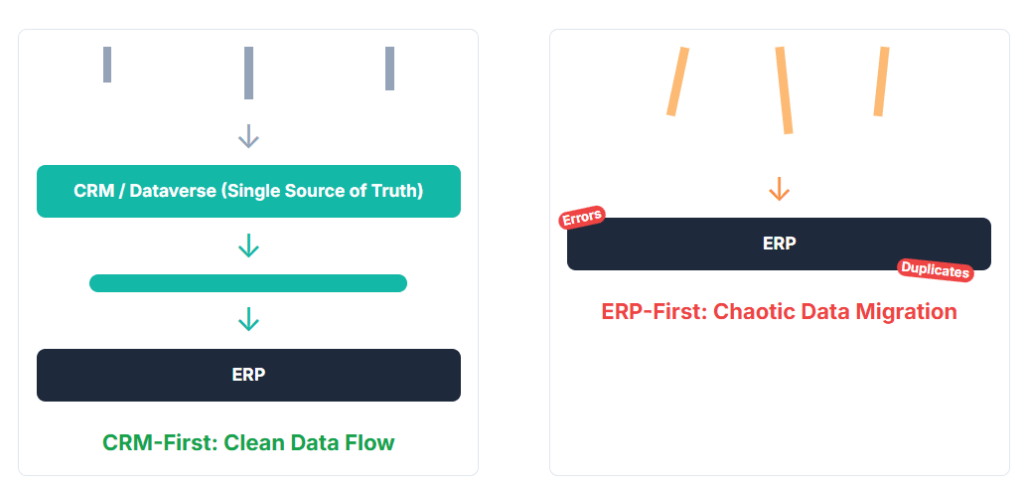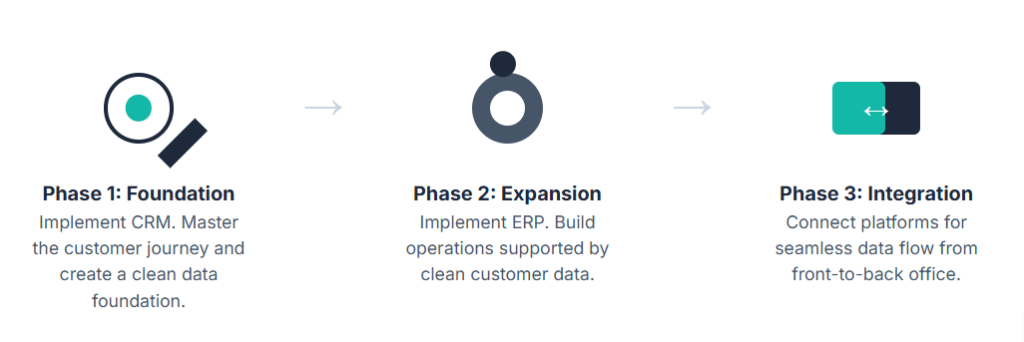
The Customer-First Imperative: Why CRM Implementation should come before ERP
In the landscape of enterprise digital transformation, leadership faces a critical sequencing decision: which foundational system to implement first? The choice between a Customer Relationship Management (CRM) platform, designed for front-office engagement, and an Enterprise Resource Planning (ERP) system, the backbone of back-office operations, is far more than a technical detail. It is a strategic decision that dictates the architecture, risk profile, and ultimate success of the entire transformation.
While traditional wisdom often favored stabilizing internal operations first, the modern digital economy demands a reversal of this logic in my point of view. A customer-first approach and implementing a CRM like Dynamics 365 Customer Engagement before an ERP like Dynamics 365 Finance & Operations. Is the superior strategy for building a resilient, agile, and profitable enterprise. And here as my thoughts on why this is the matter:
Front-Office Agility vs. Back-Office Stability
The core of the argument lies in the distinct purpose of each system. A CRM is the engine of revenue and relationships. Its entire focus is external, empowering sales, marketing, and service teams to understand, engage, and retain customers. Its success is measured in top-line growth, market responsiveness, and customer lifetime value.
Conversely, an ERP is the bedrock of operational control. Its focus is internal, integrating finance, supply chain, and human resources to ensure efficiency, compliance, and stability. Its return on investment is measured in bottom-line savings, risk mitigation, and process optimization.

Implementing the rigid, internally focused ERP system first forces the agile, customer-facing processes to conform to a predefined and inflexible framework. This «inside-out» model stifles the ability to adapt to market changes and can lead to a suboptimal customer experience. A CRM-first strategy allows an organization to perfect its customer engagement model first, and then architect the back-office operations to support that proven, revenue-generating engine.
The Clean Data Foundation
In today’s economy, clean, unified customer data is the most valuable corporate asset. A CRM-first implementation forces an organization to confront its customer data challenges at the beginning of the journey. The project’s primary goal is to create a single source of truth for every customer, consolidating disparate information into a governed, structured, and validated master record. With Dynamics 365 Customer Engagement, this foundational asset is built on the robust and scalable Microsoft Dataverse platform.
An ERP-first approach treats customer data as a transactional necessity. Customers become an entry for an invoice or a shipping address, rather than a strategic asset. This inevitably creates a massive and high-risk data migration project down the line, plagued by duplicate records, inaccurate information, and conflicting data from siloed legacy systems. Poor data quality is a leading cause of ERP project delays, budget overruns, and outright failure. By establishing a pristine customer data master in the CRM first, the subsequent ERP implementation consumes clean, pre-validated data, dramatically de-risking the entire program.
ROI and User Adoption
Beyond architecture, the economics are compelling. CRM implementations deliver a faster time-to-value and time to market. By directly impacting the teams responsible for revenue, a CRM generates tangible returns with increased sales, higher conversion rates, and better retention. All of which can help fund the more capital-intensive ERP project that follows.

Furthermore, user adoption is a critical factor in any system rollout. ERP projects are notorious for encountering employee resistance due to their massive, disruptive scope. A CRM, however, is typically deployed to a highly motivated user base. These sales and service professionals who directly benefit from tools that help them achieve their targets. Securing an early win with this influential group builds powerful organizational momentum. They become champions for the transformation, creating the cultural capital needed to navigate the more challenging, organization-wide ERP implementation.
A Blueprint for Success
The strategic imperative is clear. A successful digital transformation is not built from the inside out. It is built from the customer inward.
- Phase 1: Foundation. Implement Dynamics 365 Customer Engagement to master the customer journey. This initial project establishes a clean data foundation, secures early user adoption, and delivers immediate, revenue-focused ROI. It also reduce the need of an expensive customer master project later down the line.
- Phase 2: Expansion. With a stable customer data model and organizational momentum, begin the Dynamics 365 Finance & Operations implementation. Use the rich, real-world data from the CRM to inform a more intelligent and reality-based configuration of financial and operational processes.
- Phase 3: Integration. Connect the two platforms using native tools like Dual-Write to create a seamless, end-to-end quote-to-cash process, ensuring data flows effortlessly between the front and back office.

By sequencing the transformation in this way, an organization does more than mitigate risk and accelerate value. It embeds a customer-centric philosophy into its core digital architecture, building a business that is structurally and culturally aligned with its most important asset: its customers.